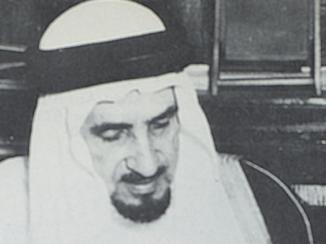Overview
What are the Departmental Papers: Political and Secret Separate (or Subject) Files?
Files with the IOR/L/PS/10 reference originate from the Political and Secret Department of the India Office The department of the British Government to which the Government of India reported between 1858 and 1947. The successor to the Court of Directors. . Until 1931, this department was responsible for supervising both the Government of India’s foreign policy, and its relations with the Indian princely states. However, when it was subsequently divided, the newly formed Political (External) Department was charged with responsibility for foreign policy, and the Political (Internal) Department for the princely states.
The series consists of bound volumes containing comprehensive collections of papers on specific subjects, generally accumulated over a number of years.
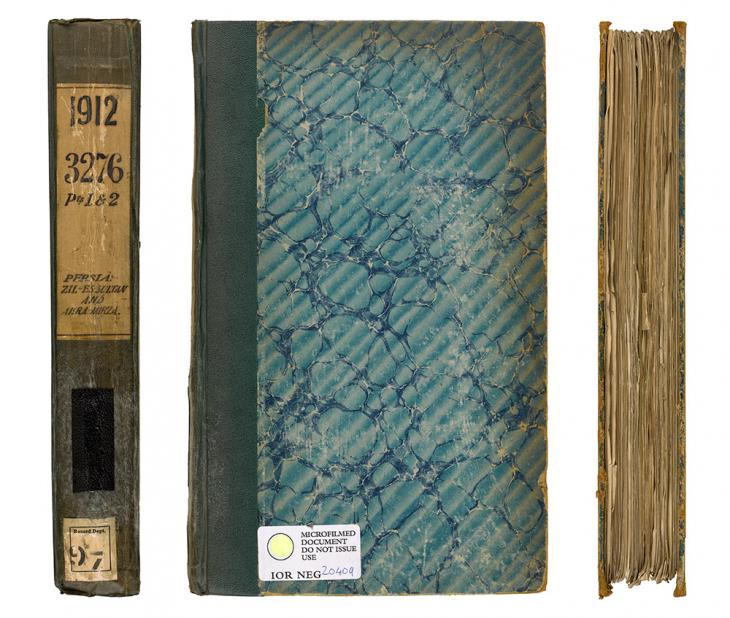
The IOR/L/PS/10 files on the Qatar Digital Library relate to countries and territories in the Gulf and Middle East including: Persia (Iran), Qatar, Muscat and Oman, Kuwait, Iraq, Bahrain, Nejd and Hejaz (now provinces of Saudi Arabia), the Trucial Coast A name used by Britain from the nineteenth century to 1971 to refer to the present-day United Arab Emirates. (now the United Arab Emirates), the Aden Protectorate (now part of Yemen), and Turkey. The majority of them date from 1901 to the 1930s.
What subjects are covered by the files?
The files cover a wide range of subjects relevant to British interests and policy in the Gulf and Middle East. The subjects often consist of one or more topics in relation to a particular country or location, or sometimes to more than one country or location, or to the Gulf region as a whole. Each subject was assigned its own number by the Department.
The subject matter covered most frequently in the files includes: developments in the region during the First World War, including conditions in Persia and Mesopotamia (Iraq), and the Arab Revolt against the Ottoman Empire; territorial disputes and the delineation of frontiers between countries, including Persia and Afghanistan; arms traffic in the Gulf; the construction and proposed construction of railway lines, including the Berlin to Baghdad Railway and the Trans-Persian Railway; telegraph lines in Persia; oil concessions in Persia, Mesopotamia, Kuwait, Bahrain, Qatar, and Oman; lighting and buoying to aid navigation in the Gulf; Orders in Council A regulation issued by the sovereign of the United Kingdom on the advice of the Privy Council. for Kuwait, Bahrain, Muscat, and the Persian Coast and Islands; and British Consulates located in Persia and the Gulf.
How are the files organised?
Some subjects are made up of only one volume, which might be divided into parts. However, for many subjects there are multiple volumes, with each comprising one part of the subject, or with at least one of the volumes divided into two or more parts.
For example, subject 3877 (Turkey in Asia: oil concessions) consists of three volumes, IOR/L/PS/10/300-302. The volumes are divided into five parts. Parts 1 and 2 comprise one volume each, while parts 3, 4, and 5 constitute the third volume.
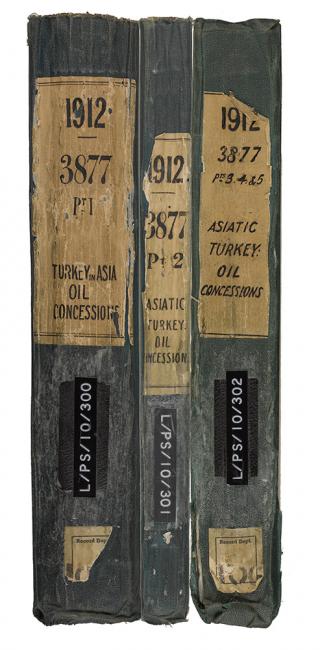
For each individual record on the Qatar Digital Library, information about this arrangement is displayed under the section titled ‘About This Record’.
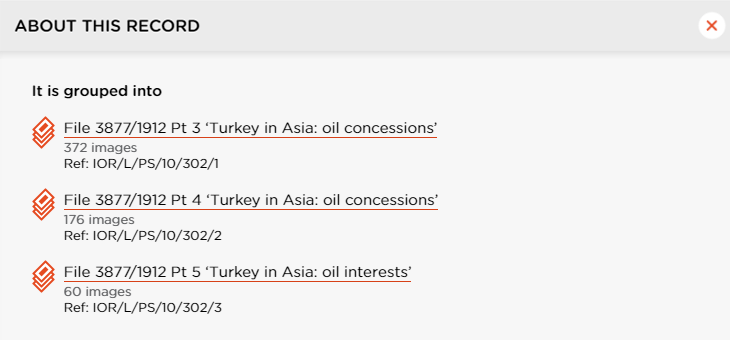
Each volume (or part of a volume) includes a divider, which gives the subject and part numbers, the year the subject file was opened, the subject heading, and a list of correspondence references contained in that part by year.
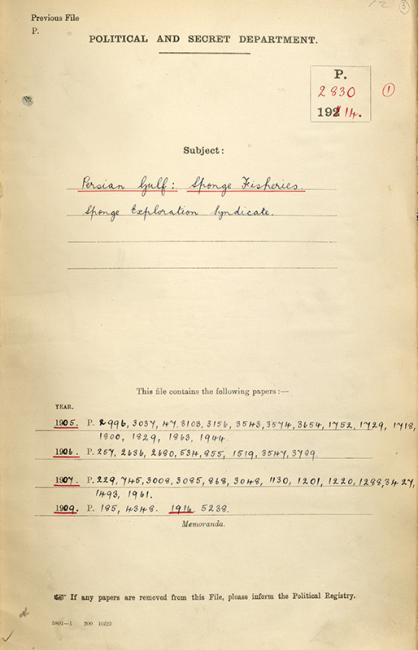
What type of papers do the volumes contain?
The papers in the volumes mostly consist of correspondence (letters, telegrams, and despatches) and Political and Secret Department minute papers. The minute papers in a volume usually record the subject of the correspondence, and can therefore be helpful in establishing the volume’s main topics. They tend to indicate whether or not the correspondence had been seen by the Under Secretary of State for India, the Secretary of State for India, and/or the Political Committee of the Council of India, and often mention whether any correspondence had been sent in response.
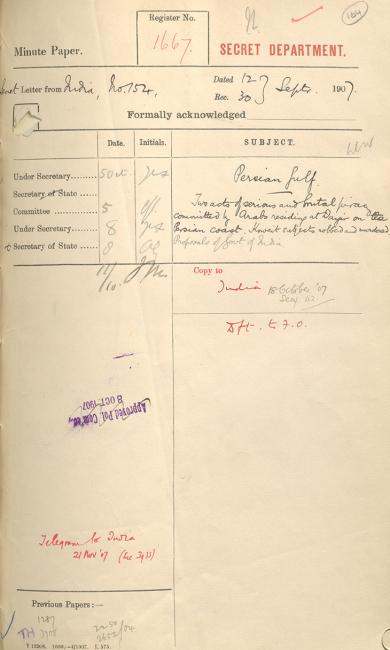
However, the volumes can also include other papers, such as India Office The department of the British Government to which the Government of India reported between 1858 and 1947. The successor to the Court of Directors. reference papers (referring papers to different departments for comment), India Office The department of the British Government to which the Government of India reported between 1858 and 1947. The successor to the Court of Directors. internal notes, memoranda, reports, maps, newspaper cuttings, and copies of agreements and treaties. While these papers are mostly in English, there are occasional documents in other languages (usually French or Arabic).
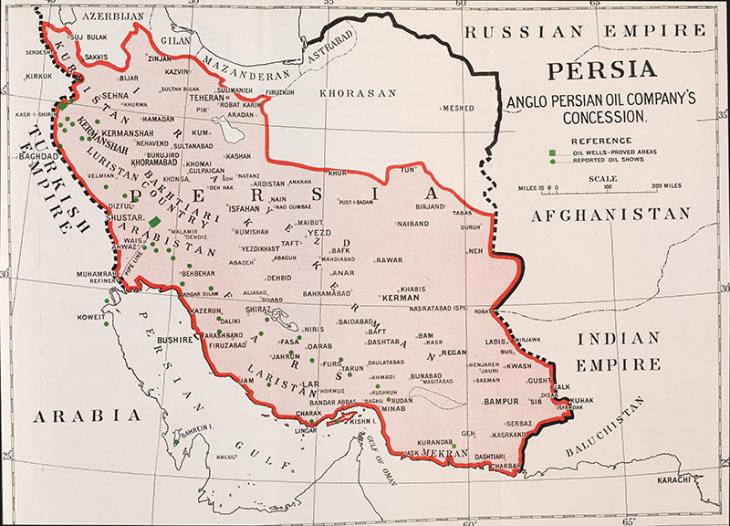
The correspondence is generally between the India Office The department of the British Government to which the Government of India reported between 1858 and 1947. The successor to the Court of Directors. and other British Government departments (principally the Foreign Office), or between the India Office The department of the British Government to which the Government of India reported between 1858 and 1947. The successor to the Court of Directors. and the Government of India Foreign and Political Department. The volumes typically also contain copies of correspondence between the Foreign Office and other British Government departments, such as the Treasury and the War Office, as well as between the Foreign Office and British diplomats, consuls, and officials in other countries. These copies were sent to the India Office The department of the British Government to which the Government of India reported between 1858 and 1947. The successor to the Court of Directors. for information or sometimes for the purposes of consultation.
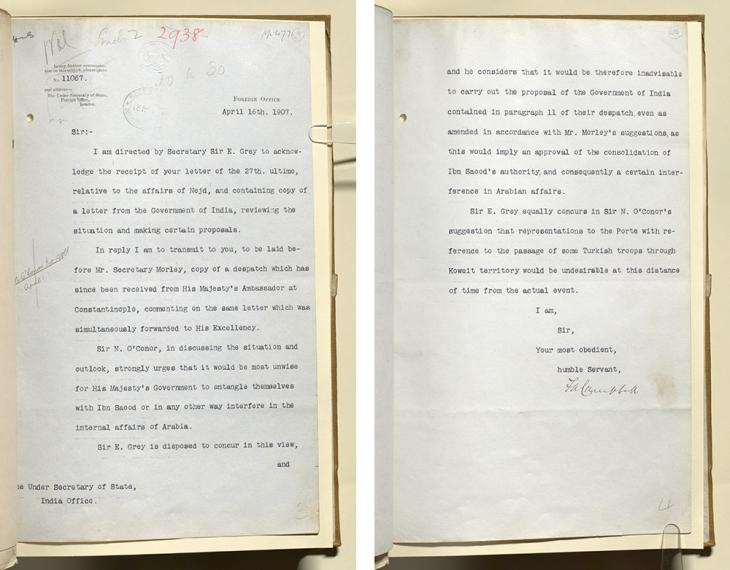
In addition, the volumes often incorporate copies, sent to the India Office The department of the British Government to which the Government of India reported between 1858 and 1947. The successor to the Court of Directors. by the Government of India Foreign and Political Department, of correspondence mostly between the latter and British officials, including the Political Resident A senior ranking political representative (equivalent to a Consul General) from the diplomatic corps of the Government of India or one of its subordinate provincial governments, in charge of a Political Residency. in the Persian Gulf The historical term used to describe the body of water between the Arabian Peninsula and Iran. . However, they might also contain letters and telegrams from a range of other correspondents, among them rulers, ambassadors, government ministers and other officials of countries in the region and elsewhere, and corporations such as banks and oil companies.
In offering such comprehensive collections of correspondence and other papers, and spanning such a range of subjects related to British interests and policies in the Gulf and Middle East, the IOR/L/PS/10 series constitutes an exceptionally valuable primary source for research.
FURTHER READING
Martin Moir, A general guide to the India Office The department of the British Government to which the Government of India reported between 1858 and 1947. The successor to the Court of Directors. Records (London: British Library, 1988; repr. 1996)
Martin Moir, ‘A study of the history and organization of the political and secret departments of the East India Company, the Board of Control Formally known as the Board of Commissioners for the Affairs of India, it was established by an Act of Parliament in 1784 to supervise the activities of the East India Company. and the India Office The department of the British Government to which the Government of India reported between 1858 and 1947. The successor to the Court of Directors. 1784-1919’ (unpublished doctoral thesis, University of London, University College London, 1966)
Penelope Tuson, India Office The department of the British Government to which the Government of India reported between 1858 and 1947. The successor to the Court of Directors. Records (Oxford: Oxford University Press, 1980)

